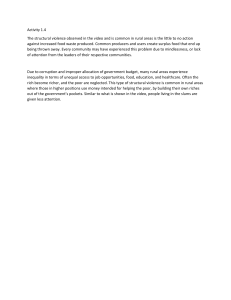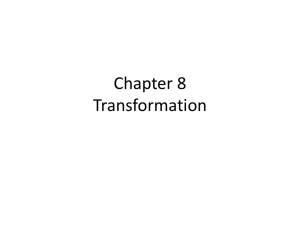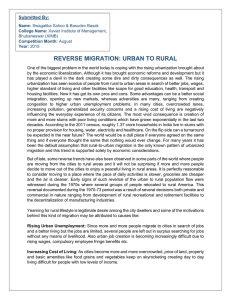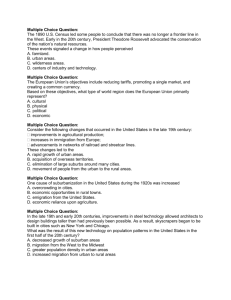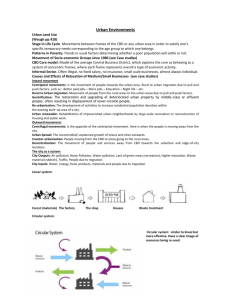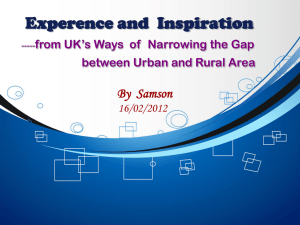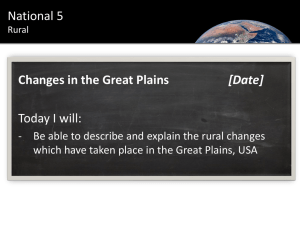Powerpoint 9 – World Cities
advertisement
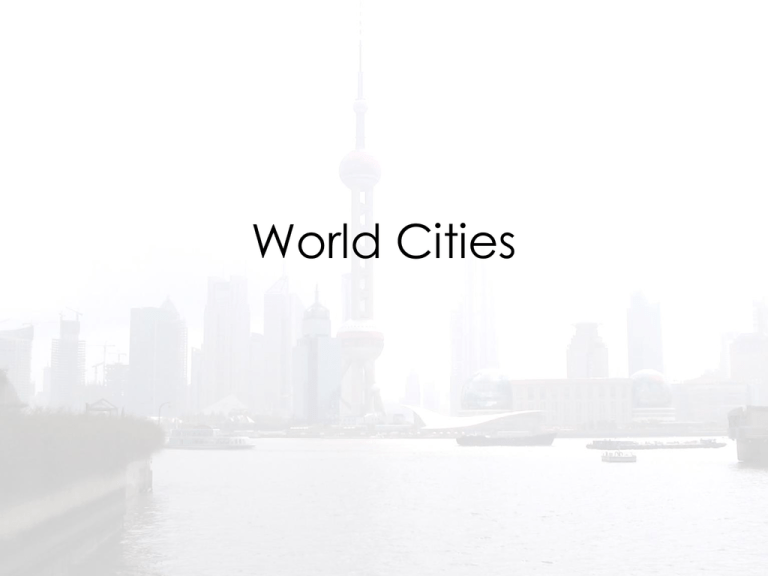
World Cities What is a city? • This is always a tricky definition and not very straight forward • Is it based on population? • Is it based on what is in the city? • Does it have to have a cathedral? (a really common misconception!) Different types of City • Super city – population over 5 million York and Tokyo are both 10 million • MegacityNew – population over megacities and world cities. But what about It is a super city (not based • World city – London? are cities of power mega) but many people consider it to on trade, strength, innovation bepolitical the world’s most important city because of its connections through and communications commerce, trade, service provision and flowsto justbe to name a few factors to be a • Do youtravel have a megacity world city? World cities are connected to other places all over the world. However the places that they are connected to are not random, but are strategically located either for travel reasons, or for economic and political reasons. Places that are not connected to world cities (or even secondary cities) could be left out of the globalised world in a number of different ways What can maps like this tell us about different cities around the world and their connections? How are cities growing • There are 2 main processes: 1. The first is internal growth (natural increase). This happens because city dwellers (particularly in developing countries) have high birth rates 2. The second is those who move to the cities from the countryside. These tend to be young, fertile people who cause this high birth rate within cities Urban Growth • The poorest parts of the world have become the fastest growing, with migration dominating this growth • In some countries, this growth can be as much as 6 – 8% with much of this growth in slums • By 2020 the amount of people living in slums around the world will reach between 1.3 – 1.4 billion Rural to Urban Migration Pull factors Push factors • Jobs Town • Poverty • Health care •Conflict • Natural disasters • Crop failure •Land subdivision • Education Rural areas • Safety Small towns • Housing • Bright lights Why do rural dwellers migrate? • Most people who migrate to urban slums are not moving blindly (unless its through war or a natural disaster) • People are well aware of the problems living of living in the city as they will have likely made arrangements for accommodation and jobs with family or friends • Despite the living conditions, they know that in the long run their prospects are better than in the rural area Problems created by urban – rural migration • Strain on services e.g. education, transport health care • Water supply • Food • Job supply • Housing provision • Next lesson we are going to look at what is being done to solve this! Urban Processes • Many developing cities are continuing to grow though a number of processes: • Urban sprawl: Urban areas growing outwards in an uncontrollable way. In the developing world this results in slums • Suburbanisation: The wealthy choosing to live on the city edge to escape poverty, crime, congestion and pollution in the city centre. A new trend is the gated community In the developed world • Counter urbanisation: Movement of people out of the cities and into rural areas • Re-urbanisation: This is the regeneration of urban areas that have declined over previous year Mumbai: An example of a rapidly urbanising megacity • Commercial capital of India • Home of Bollywood • Seen as the technological hub of India • Some rents here are more expensive than in London and New York A city of contrasts
